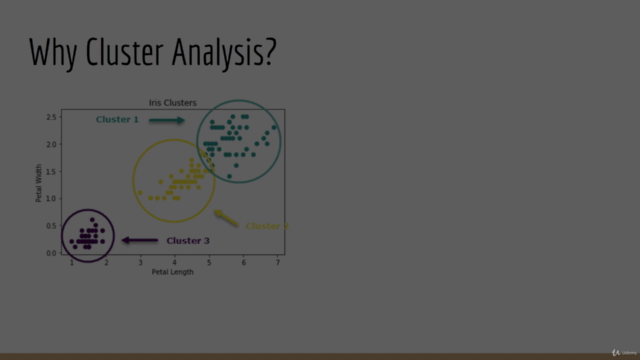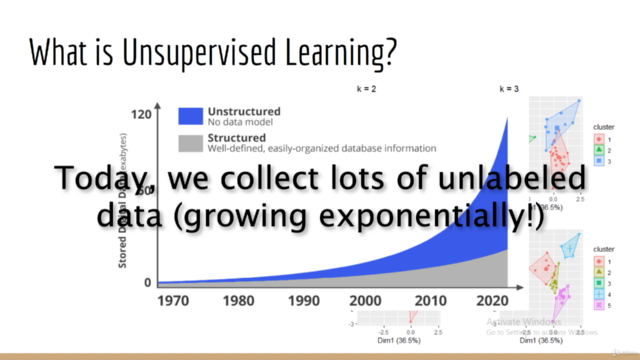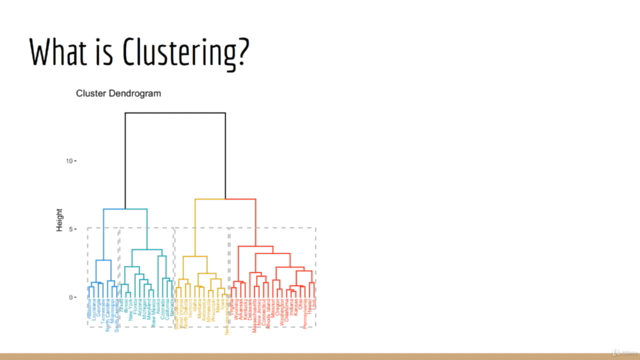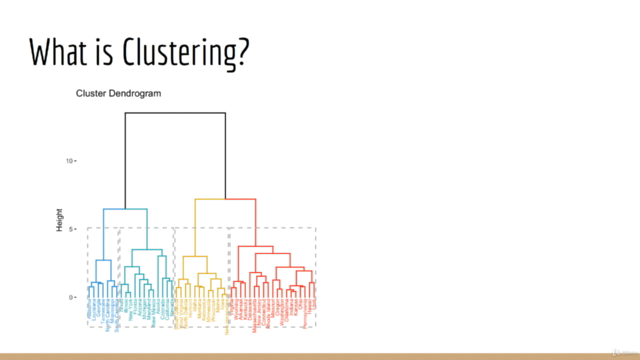Cluster Analysis and Unsupervised Machine Learning in Python

Why take this course?
🌟 Unlock the Mysteries of Data with Cluster Analysis! 🌟
Course Title:
Mastering Cluster Analysis and Unsupervised Machine Learning in Python
Headline:
Discover the Power of Pattern Recognition and Data Mining through Advanced Python Techniques!
Introduction to Unsupervised Machine Learning: Cluster analysis stands at the forefront of unsupervised machine learning and data science, offering a powerful toolkit for data mining and big data applications. Unlike its supervised counterpart, cluster analysis doesn't rely on pre-labeled data; it autonomously finds patterns within the data, making it essential in environments where labels are absent or not feasible to acquire.
The Importance of Unsupervised Learning: Imagine a world where robots and artificial intelligence systems can learn and adapt without human intervention. That's the essence of unsupervised machine learning! It enables these entities to explore their surroundings, identify patterns, and make informed decisions based on the data they encounter.
Beyond Labeled Datasets: Have you ever pondered over how the labeled datasets used in supervised machine learning are created? The answer is often manual effort, which isn't always scalable or cost-effective. Unsupervised machine learning steps in to fill this gap by allowing us to analyze and understand the structure of our data without the need for manual labeling.
Diving into Clustering Techniques: This course will delve into two primary clustering methods: k-means clustering and hierarchical clustering. We'll also explore Gaussian mixture models and kernel density estimation (KDE), shedding light on their roles in understanding the probability distributions within your data. A fascinating aspect to note is how Gaussian mixture models and k-means clustering can be mathematically equivalent under certain conditions.
Hands-On Learning Experience: Unlike other courses that merely guide you through API usage, this course focuses on a deeper understanding of machine learning models by enabling you to build them from scratch. Through practical implementation, you'll gain insights into the internal workings of these models and develop a robust comprehension that goes beyond surface-level knowledge.
Course Highlights:
- Learn to implement machine learning algorithms from ground up.
- Achieve a comprehensive understanding of clustering, k-means, hierarchical clustering, Gaussian mixture models, and KDE.
- Engage with interactive Python coding exercises using Numpy and Scipy.
- Gain the ability to visualize and interpret machine learning model behavior.
Learning Path: To get the most out of this course, it is recommended that you have a grasp on:
- Basic matrix operations.
- Understanding of probability concepts.
- Proficiency in Python programming, including if/else statements, loops, and data structures like lists, dicts, and sets.
- Familiarity with Numpy for matrix and vector operations and CSV file handling.
Course Structure:
- Introduction to Cluster Analysis: Understanding the significance and applications of unsupervised machine learning.
- Deep Dive into K-Means and Hierarchical Clustering: Step-by-step guidance on implementing these methods in Python.
- Exploring Gaussian Mixture Models and KDE: Techniques for capturing complex data distributions.
- Practical Exercises: Apply your knowledge with hands-on coding tasks to solidify your understanding.
Why Choose This Course?
- You'll learn the foundational concepts behind unsupervised machine learning algorithms.
- Gain unique insights by implementing these algorithms from scratch.
- Enhance your problem-solving skills and deepen your understanding of data analysis.
- Move beyond memorizing code snippets and truly comprehend how these models function.
Suggested Learning Order: For an optimal learning journey, refer to the "Machine Learning and AI Prerequisite Roadmap" lecture available in the FAQ of this or any other course by the instructor, including the free Numpy course.
Embark on a transformative journey with Cluster Analysis and Unsupervised Machine Learning in Python. Elevate your data analysis skills to new heights and unlock the full potential of your datasets! 🚀📊
Enroll Now and Transform Your Data into Insightful Decisions! 🎉
About the Instructor:
Learn from an expert who specializes in teaching machine learning concepts through practical, hands-on Python implementation. With a focus on helping you build your algorithms from scratch, this course is designed to give you a deep understanding of the core techniques used in unsupervised machine learning. 🧠✨
Course Gallery




Loading charts...
Comidoc Review
Our Verdict
This course stands out with its strong emphasis on the mathematical foundations of cluster analysis and unsupervised machine learning techniques. While some may find the theoretical proofs excessively detailed, others will appreciate the rigor and depth provided by the course. The implementation of two algorithms from scratch is a valuable exercise in understanding these techniques. However, the course could benefit from more real-world examples, practical assignments and a better balance between theory and practice for non-mathematicians.
What We Liked
- Comprehensive coverage of cluster analysis and unsupervised machine learning techniques
- In-depth exploration of the mathematics behind each algorithm
- Implementation of two out of three algorithms from scratch
- Clear explanation of Gaussian Mixture Models and its application
Potential Drawbacks
- Some theoretical proofs may seem unnecessary for some learners
- Lectures might feel a bit disorganized and lack real-world examples
- Absence of guided assignments or capstone projects to apply learning
- Overemphasis on mathematical concepts could be challenging for non-mathematicians